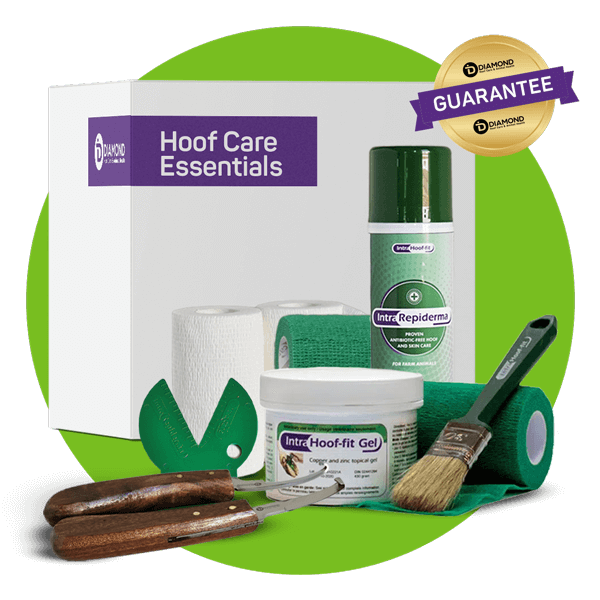Hoof Clips Newsletter
Hello and welcome to the Hoof Clips Newsletter – read by 5,000 Hoof Care professionals around the world. Join the ~1,200 hoof care pros if you’re not already signed up.

Have you ever thought about installing rubber flooring for your cows? I recently chatted with Don from Easyfix Rubber at Canada’s Outdoor Farm Show in Woodstock, Ontario. He had some great insights that got me thinking about the benefits and drawbacks of rubber flooring from a hoof care perspective. Let’s dive into why rubber flooring might be the next best investment for your herd’s comfort and health.

Why Rubber Flooring is Chosen
Rubber flooring, whether mats or rolls, is placed over concrete floors or slats to provide some flexibility and traction, reducing the impact on your cows’ hooves. Compared to the hard, unforgiving surface of concrete, the slight give of rubber makes it easier on the hoof. While nothing beats the sheer comfort of pasture or straw pack, rubber flooring offers a happy medium – giving your cows a cushioned surface to walk on.
Advantages of Rubber Flooring
Choosing rubber flooring comes with several advantages:
- Less impact on the hoof: A softer surface reduces strain and potential injuries.
- Less wear of the hoof horn: This is a benefit when cows are exposed to rough floors 24/7, but it also has the drawback of causing hooves to wear less and grow longer—an imbalance in hooves potentially leads to more hoof problems.
- Less slippery: Provides better traction, reducing slipping hazards.
- Softer when a cow falls: Reduces injury risk from falls.

Disadvantages to Consider
Throughout my hoof trimming career, I have observed some negative aspects of rubber floors, but primarily when they are installed for the wrong reasons.
- Extra cost: Rubber floors are an add-to-concrete feature and, therefore, more expensive to purchase.
- More alley layers: There is potential for more frequent cows to lay when the rubber floor is more comfortable than the free-stalls, or it is due to significant overstocking—there are more cows than stalls, which creates alley layers.
- Can become slippery: Worn mats can pose slipping hazards, which brings maintenance challenges.
Does Cost vs. Benefit Pencil Out?
While some farms see a clear return on investment with fewer injuries and increased cow comfort, the exact benefit-to-cost ratio will vary. If you already have a well-managed barn and want to enhance comfort, rubber flooring could be a fantastic upgrade. Your cows love it!
However, it’s not a cure-all. If you’re dealing with lameness, rubber won’t miraculously fix it – you’ll still need to tackle hoof trimming and other management practices. Rubber should fit into your overall barn management strategy – think also for example of stall dimensions, stocking density, lameness management, regular hoof trimming, and exercise opportunities.
Steps to Take Before Installing Rubber Floors
Before you run and order any kind of rubber floors, let’s pump the brakes and do a little planning. First off, ask yourself why you’re considering this investment. Does it fill a specific need for your cows? Here’s a roadmap to guide you:
1. Identify the Reason for Investment:
- Why are you considering rubber flooring? Evaluate if it addresses any specific needs of your cows.
- Fact: cows do like it. If they have a choice, they will prefer to walk on rubber before they walk on concrete.
2. Address Lameness Issues First:
- If lameness is your primary concern, take care of that before moving forward.
- We offer an essential starter package with hoof trimming and treatment options to help get those lame cows back on their feet.

Hoof Care Starter Kit
3. Evaluate Barn Layout:
- Once lameness is under control, take a look at your barn’s setup.
- Check stall dimensions – are they spaced enough for your cows?
- Assess traffic flow – are the cows moving efficiently, facing bottlenecks, or making steep 90-degree turns?
- Consider waiting times in the holding pen – can they be optimized?
- Can you better add a partial rubber floor in critical areas rather than a complete redo? Contact your supplier or barn designer for tips and calculations.
4. Finetune Hoof Trimming Protocols:
- Rubber flooring – partial or complete – will affect horn growth. Communicate with your hoof trimmer to keep timely hoof checks on track.
- Our guide to trim can be found in our blog post “Bovine Hoof Trimming: A Complete Step-by-Step Guide”
A little bit of strategic planning now can save you plenty of headaches – and hoof aches – down the line.
That’s it for today. Hit reply if you have experience with rubber flooring. I love to hear about it.
Koos
